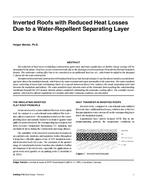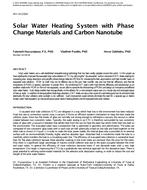In the offices of the future, human occupants will become a major heat source since the airflow generated by heat sources such as lighting andequipment will be less important due to increased use of low-powered devices. In that regard, the volume flux of the human convective boundarylayer is comparable to the total ventilation flow, thus having a prominent role in the formation of airflow patterns in an indoor environment,spread of airborne infectious diseases, inhaled air quality and thermal comfort. On the other hand, radiant chilled ceiling is seen as a sustainableenergy efficient technology that has been increasingly utilized in low energy building design. By having a reduced convective and increased radiantheat transfer, this technology allows expanding the upper limit of dry bulb temperature. The implication of such a design on the air movement inthe vicinity of the human body, and thus on the transport of potentially infectious pollutants is little known to date. This study aims tocharacterize the velocity field around a thermal manikin in a calm indoor environment using particle image velocimetry (PIV). The influence oftwo different ambient temperatures on strength and shape of the human boundary layer is examined in relation to body posture (seated andstanding). Results of this study reveal that both the ambient temperature and body posture significantly affect the shape and velocity distribution ofthe human convection flow. The maximum velocity measured in the manikin breathing zone was as much as 27% higher when the ambienttemperature is kept at 20 °C (68 °F), compared to the case with a higher temperature of 26 °C (78.8 °F). Similarly, the shape of the humanconvective boundary layer varies markedly with body posture and temperature, creating a wider flow in front of the seated manikin at higherbackground temperatures.
Citation: IAQ Conference: IAQ 2013: Environmental Health in Low Energy Buildings
Product Details
- Published:
- 2013
- Number of Pages:
- 10
- File Size:
- 1 file , 1 MB
- Product Code(s):
- D-2013IAQConf-59


